African washing treatment of Kenyan coffee beans flavor and taste characteristics of Kenyan K72 treatment
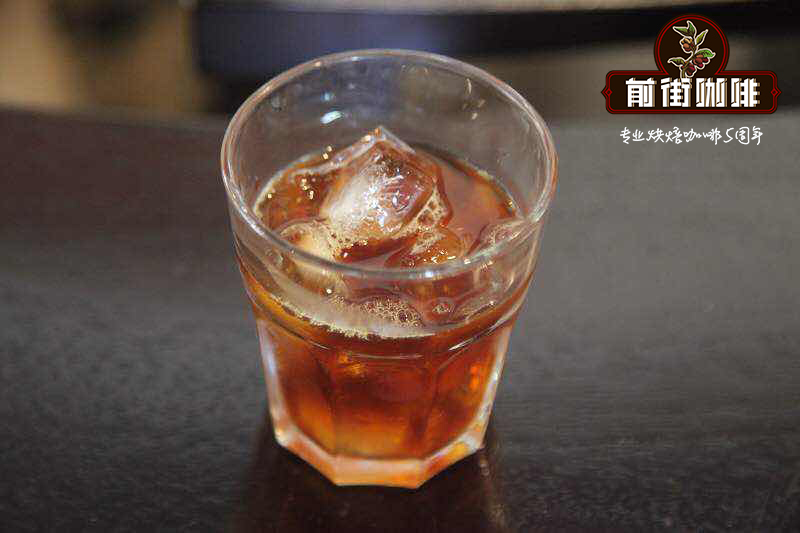
Professional coffee knowledge exchange More coffee bean information Please pay attention to coffee workshop (Weixin Official Accounts cafe_style)
A few days ago, Street Coffee just entered 3 different cooperatives of washed Kenya. When it comes to Kenya coffee, what makes people forget is its strong fruit acid taste, distinct fruit flavor, rich taste and beautiful balance. Today, let's compare the flavor of these three beans, which are also washed Kenya, Blackberry Muse, Timani Girl and Comatina. What's the difference?
| Kenya
Kenya is the full name of Kenya Republic, located in eastern Africa, the equator across the central East African Rift Valley north-south vertical. It borders Somalia to the east, Tanzania to the south, Uganda to the west, Ethiopia and Sudan to the north, and the Indian Ocean to the southeast. There are many plateaus in the territory, with an average altitude of 1500 meters. Kiliniaga Peak (Mount Kenya) in the middle is 5199 meters above sea level, with snow on the top, the second highest peak in Africa.
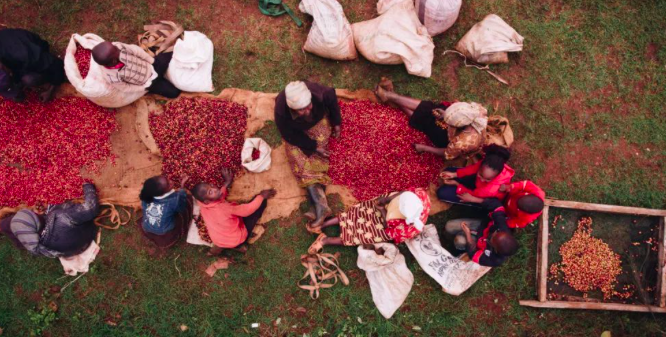
Elevation, latitude, geology: the equator runs through Kenya, and the border is exactly within ten degrees of north and south latitude. It is a tropical region with two rainy seasons per year and two harvests, 60% concentrated in October to December and 40% in June to August. Coffee is mainly grown in volcanic areas around the capital Nairobi to Kenya mountains at an altitude of 1600-2100 meters, most coffee is planted above 1500 meters. This height is suitable for coffee bean development flavor, because the mountain temperature is lower, the growth is slower, the aromatic components of coffee beans are fully developed, the fruit acid flavor is more obvious, and the texture is harder. This fertile, moon-shaped coffee zone is Kenya's main producer of fine beans. Coffee is Kenya's second most traded export after tea.
Kenya's coffee producing areas are most famous for their seven major producing areas, Thika, Kirinyaga and Mt. Kenya. Kenya West, Nyeri, Kiambu, Ruiri and Muranga. Kenya and Aberdare are the main producing areas.
| Production area
Kenya Blackberry Muse
Kenya Blackberry Muse batches are produced in NYERI (Nyeri), which is located in central Kenya and is home to the extinct volcano Mount Kenya. The lateritic soil of this region produces Kenya's best coffee; agriculture is extremely important here, with coffee being the most important crop; co-operatives of small farmers are more common than large plantations; there are two harvests in this region, but coffee from the growing season is usually of higher quality. This region is known for its thick acidity like blackberries and fruity aromas.
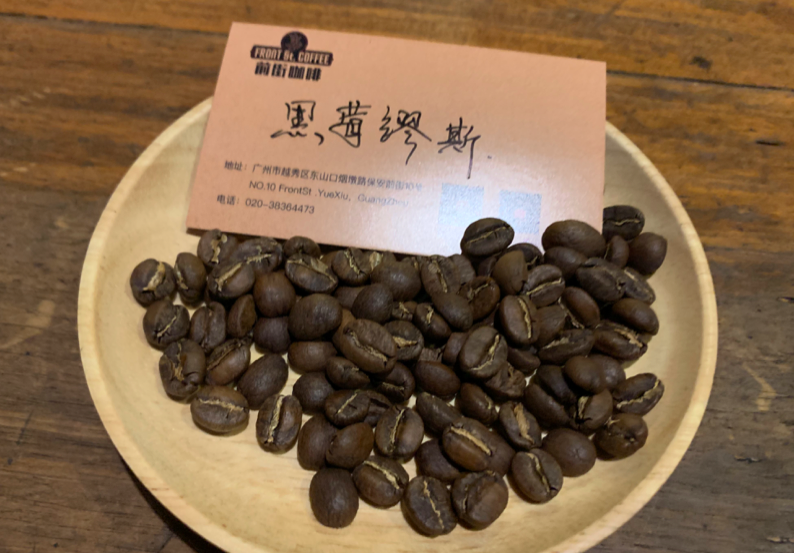
Kenya Blackberry Muse batches are specially selected coffee red fruits, extremely mature, picked by coffee farmers, sent to the washing station on the same day to wait for processing, add a manual selection process before peeling, the immature coffee cherries are screened out, the coffee beans are soaked and fermented for 72 hours after peeling, and naturally dried on a raised sun bed, and all the coffee processing water comes from the clean water source of Langdu River.
[Kenya Timani Girl]
The Timani Girls of Kenya are from Karatina, a micro-region in NYERI (Neri), and the Ndima-ini (Ntani Processing Plant) factory is part of the Gakuyu Cooperative, which split from the larger Mathera Cooperative in 1996 and became its own. The Gakuyu cooperative has only two factories, Ndima-ini and Kirigu, employing 1800 people. The Kirigu plant is named after the Kirigu River, which supplies water for processing coffee nuts near the plant.
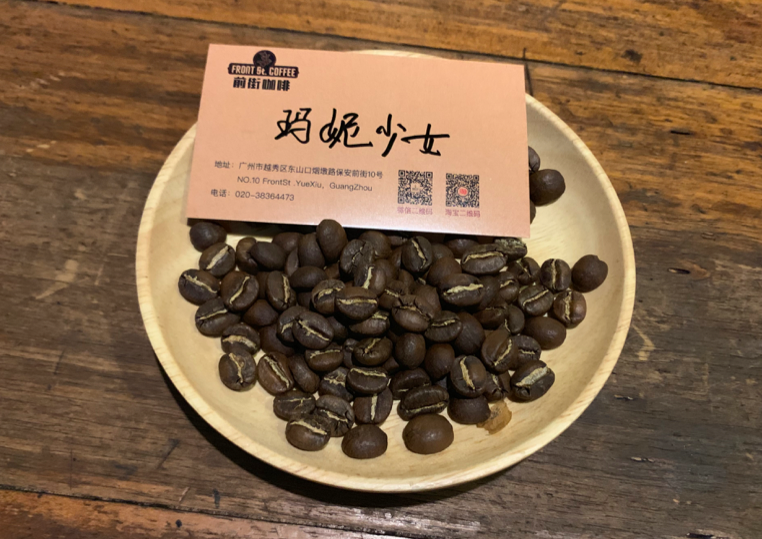
Over the past 20 years, about 850 small farmers have brought ripe fresh coffee to the Ndima-ini plant for processing by plant manager John Kamau. This Kenyan Timani girl, unlike Kenya's 72-hour fermentation washing method, is coffee beans peeled, soaked and fermented for 80 hours, and finally dried naturally on a high sun bed.
[Kenya Comatina]
Kenya Komatina is produced in Kiambu, a region in central Kenya with the highest elevation coffee growing areas in the region, and Sika is also part of this region. However, some coffee trees at high altitudes will get Dieback and stop growing. This area is named after Nakuru Town.
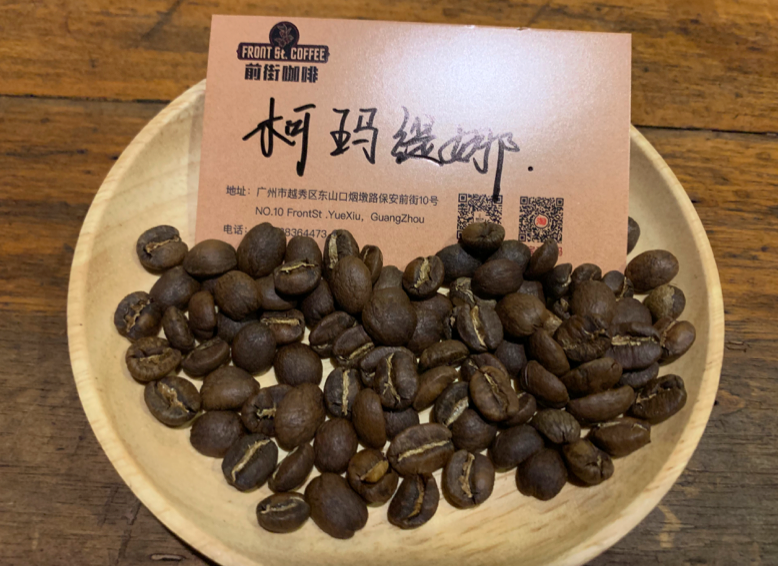
Coffee cultivation here is a mixture of manor and smallholder farming, but yields are relatively small. This is a traditional tea growing area, coffee beans have vanilla and floral aromas.
| Varieties (sl28, sl34)
In the early 1930s, Scott Labs, commissioned by the Kenyan government, selected 42 varieties suitable for the country. After screening one by one, SL-28 and SL-34 were finally obtained.
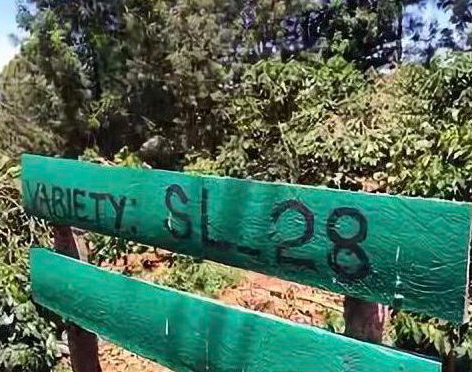
SL28 was bred to produce large quantities of coffee beans with high quality and resistance to diseases and pests, while in some regions, the breeding objectives were mainly high yield and disease resistance, and disease resistance was not considered.
Thanks to the bourbon gene, SL28 later produced less than expected, but the copper-leaf color and broad bean-like beans had great sweetness, balance and complex flavors, as well as significant citrus and dark plum characteristics.
SL34 has a similar flavor to SL28, except for a complex acidity and a nice sweet finish. SL28 is softer and cleaner. SL34 has French missionary, bourbon, and more iron-pickup pedigree. The bean looks similar to SL28 and is more adapted to rainforest growth.
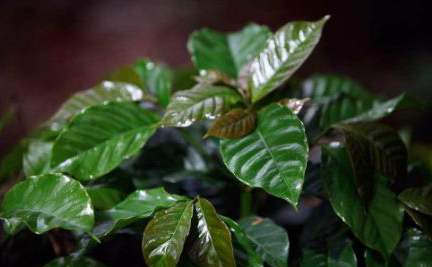
The former, it turned out, was highly rated, usually with blackcurrant acidity and complex flavor presentation, while the latter, though less so, had a bright fruity flavor. These two varieties, which currently account for 90 percent of Kenya's production, are generally recognized as representative varieties of Kenyan coffee, and SL28 is currently being actively introduced as a cultivated variety in South America.
| Treatment method (72 hours fermentation washing treatment method)
72 hours fermentation washing treatment method is a recycling repeated treatment method of washing after harvesting fermentation. On the day of harvest, the best quality coffee cherries are selected, peeled and fermented for 24 hours, and then washed with clean river water.
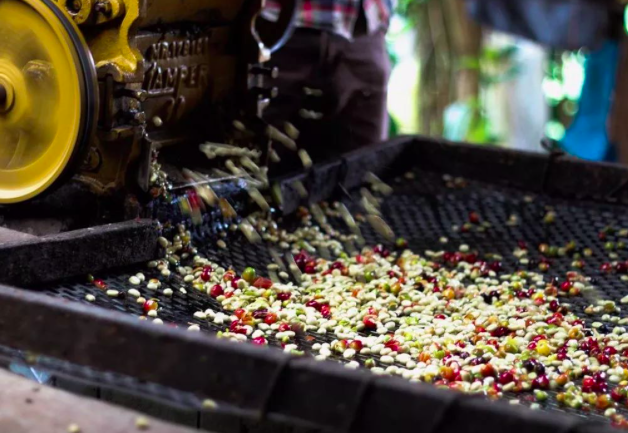
Then, it is fermented with clean river water for 24 hours, washed again, and repeated three times to reach 72 hours, so it is called Kenyan 72-hour fermentation washing treatment method, referred to as K72.
| cup mapping
Kenya Blackberry Muse
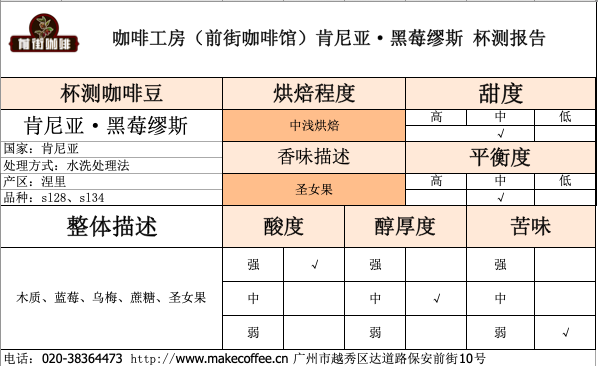
Flavor: Wood, blueberry, dark plum, sucrose, cherry tomatoes.
[Kenya Timani Girl]
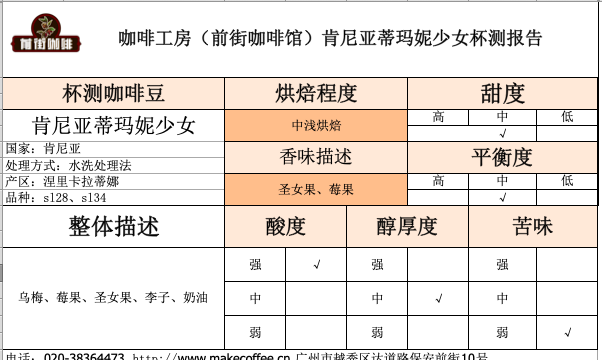
Flavor: Black plum, berries, cherry tomatoes, plums, cream.
[Kenya Comatina]
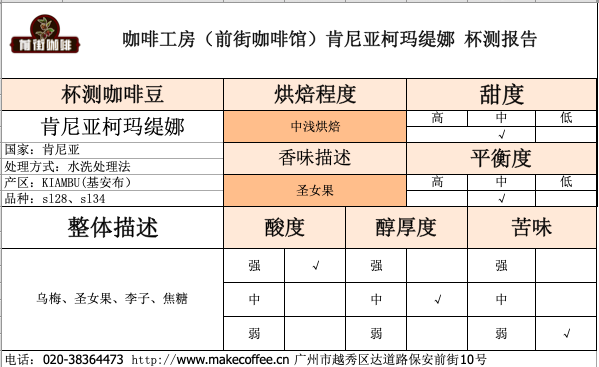
Flavors: Black plum, cherry tomatoes, plum, caramel
| brewing contrast
Front Street Coffee Share Brewing Parameters
Recommended cooking method: hand brewing cup: Hario V60 water temperature: 90℃ powder amount: 15 g powder water ratio: 1:15/1:16 grinding degree: medium fine grinding (BG 7T: Chinese standard 20 sieve pass rate 58%) brewing method: staged extraction
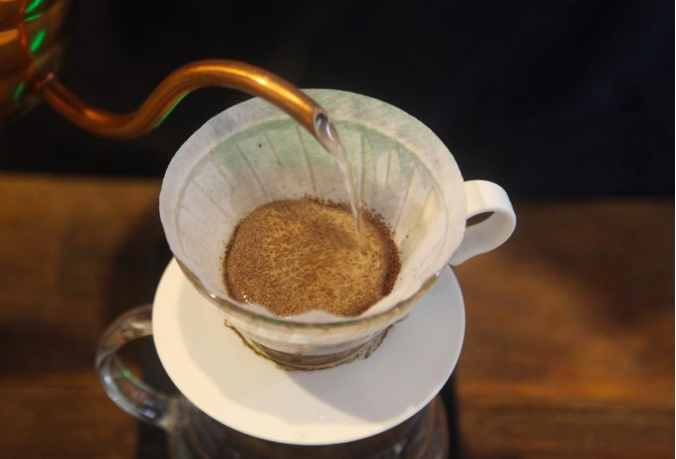
Steaming with 30g water for 30s, injecting water in a circle to 124g with small flow, stopping injecting water to 227g when the water level drops and exposing the powder bed, removing the filter cup when the water level drops and exposing the powder bed, and extracting for 200 ".
Flavor:
[Kenya Blackberry Muse]: The entrance has herbs, dark plum, cherry, cream, blueberries, and honey at the end.
[Kenya Timani Girl]: The entrance has berries, nuts, dark plum, cream, and the tail section has a hint of tomato flavor.
[Kenya Comatina]: The tomato and dark plum acid in the entrance are more obvious. There are plums, honey, cream, and sugar in the tail section.
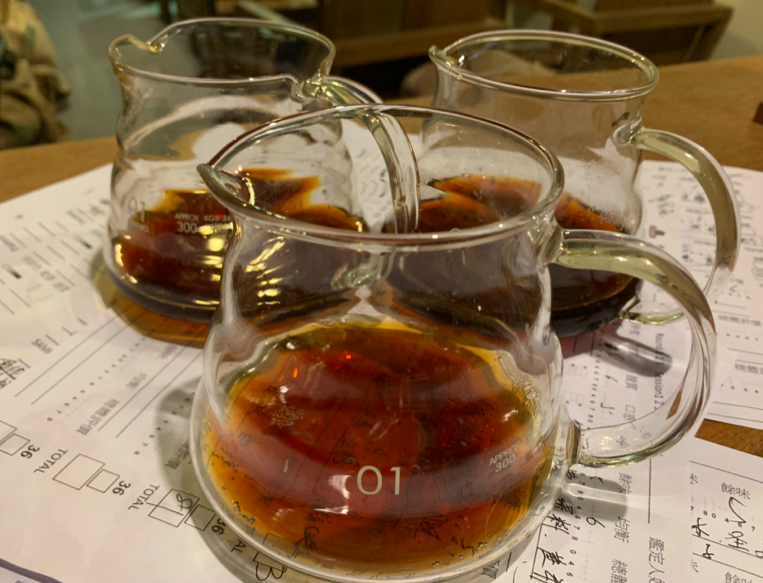
| summary
By comparison, these three Kenyan coffees all have the flavor of cherry, dark plum and cream, and the aftertaste is obviously sweet, but the acid tone of these three types is still different. The acid of [Kenya Blackberry Muse] is blueberry acid, which has obvious woody flavor, and the flavor of cherry is lighter; the acid of [Kenya Timani Girl] is similar to strawberry acid, and at the same time has the aroma of nut cream, and the flavor of cherry emerges at the end.[Kenya Comatina] is the sour tone of tomato and dark plum, and the sweet sugar of the aftertaste is obvious.
Important Notice :
前街咖啡 FrontStreet Coffee has moved to new addredd:
FrontStreet Coffee Address: 315,Donghua East Road,GuangZhou
Tel:020 38364473
- Prev

The origin and spread of the name of bourbon coffee. What are the varieties of bourbon?
Professional coffee knowledge exchange more coffee bean information please pay attention to the coffee workshop (Wechat official account cafe_style) bourbon coffee name origin and spread history: the name of bourbon coffee comes from the island where it is grown. It was named bourbon in 1715 after France transplanted round beans from Yemeni mocha to the island of Bourbon on the east coast of Africa (renamed Reunion after the French Revolution).
- Next
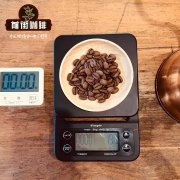
[notes on looking for beans in Qianjie] A special topic on sapphires of Fire Phoenix Manor in Costa Rica
Professional coffee knowledge exchange more coffee bean information please follow the coffee workshop (Wechat official account cafe_style) Costa Rica Central Valley Cumbres Del Poas Zahiro Costa Rica Fire Phoenix Manor Sapphire production area: central Valley Manor: fire Phoenix Manor altitude: 1600m varieties: Kaddura, Kaduai Grade: SHB treatment: solarization
Related
- Detailed explanation of Jadeite planting Land in Panamanian Jadeite Manor introduction to the grading system of Jadeite competitive bidding, Red bid, Green bid and Rose Summer
- Story of Coffee planting in Brenka region of Costa Rica Stonehenge Manor anaerobic heavy honey treatment of flavor mouth
- What's on the barrel of Blue Mountain Coffee beans?
- Can American coffee also pull flowers? How to use hot American style to pull out a good-looking pattern?
- Can you make a cold extract with coffee beans? What is the right proportion for cold-extracted coffee formula?
- Indonesian PWN Gold Mandrine Coffee Origin Features Flavor How to Chong? Mandolin coffee is American.
- A brief introduction to the flavor characteristics of Brazilian yellow bourbon coffee beans
- What is the effect of different water quality on the flavor of cold-extracted coffee? What kind of water is best for brewing coffee?
- Why do you think of Rose Summer whenever you mention Panamanian coffee?
- Introduction to the characteristics of authentic blue mountain coffee bean producing areas? What is the CIB Coffee Authority in Jamaica?

